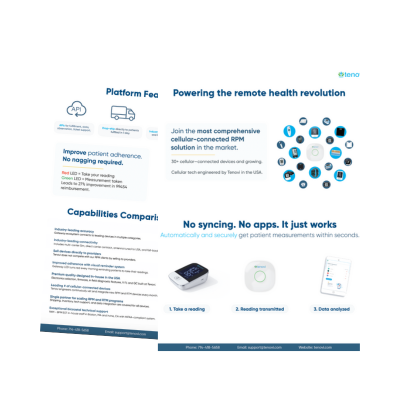Research shows 84% of maternal deaths are preventable. However, maternal care statistics are concerning in the United States where the maternal mortality rate is higher than in many other developed nations. While progress is being made globally, racial and ethnic groups still face significantly higher risks. Integrating remote fetal monitoring into maternal care has been a step toward improving prenatal outcomes, reaching underserved populations, and targeting goals in value-based care models.
A recent review of remote patient monitoring (RPM) reported the healthcare landscape demands new models of care that blend convenience, continuity, and clinical insight from a distance. This article explores how remote fetal monitoring is emerging as a vital tool to improve maternal health outcomes, reduce disparities, and support scalable, value-based prenatal care—offering remote health companies a timely opportunity to drive impact and innovation in one of healthcare’s most urgent areas.
Remote Patient Monitoring
A study published in 2025 examined how various telehealth services affect social need-related health outcomes using data from the 2022 American Hospital Association survey and area health resource files. Researchers analyzed responses from 1,005 U.S. acute care general hospitals through mixed-effects logistic regression, and found the following.
- Postdischarge telemonitoring significantly improved patient outcomes, with patients being 1.72 times more likely to experience better health and 2.39 times less likely to need additional hospital services.
- Telepsychiatry and addiction treatment users had 1.66 times higher odds of improved community health status.
- Teleconsultation and virtual office visits were associated with a 38% reduction in the odds of poor community health outcomes.
What Is Remote Fetal Monitoring?
Remote fetal monitoring refers to the use of wireless medical devices that collect and transmit data about the fetus and pregnant patient. The measurements taken typically including fetal heart rate, uterine contractions, and maternal vitals such as blood pressure and oxygen saturation. These tools allow OB-GYNs and maternal-fetal medicine specialists to monitor pregnancy progression from afar, often in real time or through daily or weekly trend tracking.
Unlike traditional fetal monitoring that requires in-office or hospital-based equipment, remote fetal monitoring solutions are typically FDA-cleared devices that transmit data securely via cellular or Bluetooth technology. These systems often integrate with EHRs or centralized RPM dashboards to enable clinicians to review, respond, and update care plans based on the incoming data.
Understanding Remote Maternal Health
The need for remote fetal monitoring is growing, particularly among high-risk pregnancies and populations with limited access to consistent in-person care. Mayo Clinic offers patients the options of a virtual prenatal Virtual Care Program called OB Nest. A 2019 study published in the American Journal of Obstetrics & Gynecology, evaluated the OB Nest prenatal care model focused on low-risk pregnancies. Findings showed OB Nest patients experienced higher satisfaction and lower stress despite fewer in-person visits. Quality of care, lab testing, and imaging remained consistent with standard care. Patients appreciated the reduced disruption to daily life, less travel, and the convenience of home-monitoring tools like fetal Dopplers, which provided reassurance.
For remote health companies considering the integration of remote fetal monitoring, the timing is ideal. As telehealth policies stabilize and RPM reimbursement becomes more mainstream, maternal health represents a powerful growth vertical with measurable impact potential.
To stay ahead, vendors should focus on:
- Developing or partnering on FDA-cleared fetal monitoring tools.
- Ensuring cellular or Bluetooth-enabled data transmission with auto-upload.
- Building provider dashboards that flag abnormal readings early.
- Collaborating with Medicaid and commercial payers to support equitable reimbursement.
With the right product, the right data flows, and the right clinical protocols in place, remote fetal monitoring can improve outcomes for mothers and babies and deliver sustainable value across digital health ecosystems.


